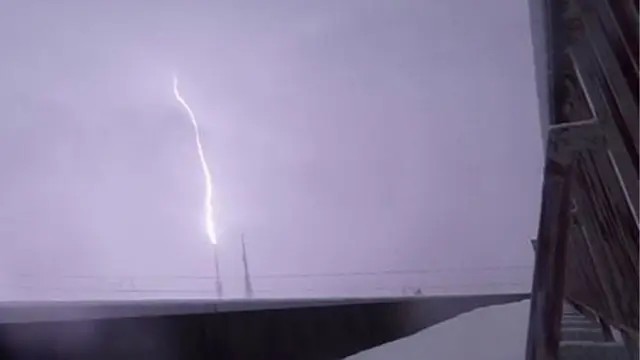Scientists Report the First-Ever Observation of a Gamma-Ray Flash Triggered by A Lightning Strike
In a groundbreaking discovery, scientists have recorded an intense burst of radiation generated during the interaction of two lightning channels. This rare phenomenon, known as a terrestrial gamma-ray flash (TGF), was observed by a research team from the University of Osaka using a sophisticated multi-sensor system.
TGFs are brief yet powerful bursts of gamma radiation that are believed to occur during lightning discharges when electrons are rapidly accelerated to near-light speeds. While this theory has long been proposed, the fleeting nature of TGFs—lasting only tens of microseconds—has made them extremely difficult to detect and study in real-time.

Figure 1. Gamma-Ray Flash.
To overcome this challenge, the research team deployed an advanced sensor array in Kanazawa City, Ishikawa Prefecture, capable of capturing optical signals, radio frequencies, and high-energy radiation associated with lightning activity. Figure 1 shows Gamma-Ray Flash.
According to lead researcher Yuuki Wada, the study of TGFs provides critical insight into the high-energy phenomena occurring in Earth’s atmosphere.
During a thunderstorm, scientists recorded the convergence of two lightning leaders—one descending from a cloud to a ground-based transmission tower and another rising upward from the tower. A TGF was detected just moments before these paths met, with the initial gamma-ray photon recorded 31 microseconds before the collision. The full radiation burst lasted 20 microseconds after the lightning channels merged, producing a discharge current of −56 kiloamperes.
Published in Science Advances, the study confirms that lightning discharges can indeed generate TGFs, formed by electrons accelerated to relativistic speeds in intense electric fields [1]. These findings help explain how lightning can produce such massive quantities of high-energy particles in the dense atmosphere.
“Our ground-based setup—including optical, RF, and high-energy sensors targeting transmission towers in Kanazawa—allowed us to capture a TGF and a −56 kA cloud-to-ground lightning event during the collision of a downward negative and an upward positive leader,” the team reported.
This unprecedented observation contributes crucial data to the ongoing investigation into how lightning can generate gamma-ray emissions—phenomena usually linked to cosmic events such as supernovae and black hole activity.
The findings also lend support to emerging theories involving the dynamics of lightning leaders and mechanisms like thermal runaway and relativistic feedback, which may explain how these extreme bursts are initiated.
Senior author Harufumi Tsuchiya emphasized that the use of a multi-sensor system to capture this event marks a world-first. While questions remain, this breakthrough brings researchers significantly closer to unraveling the physics behind these extraordinary atmospheric flashes.
Reference:
- https://interestingengineering.com/science/terrestrial-gamma-ray-flash-observed-lightning
Cite this article:
Keerthana S (2025), Scientists Report the First-Ever Observation of a Gamma-Ray Flash Triggered by A Lightning Strike, AnaTechMaz, pp.1145.

